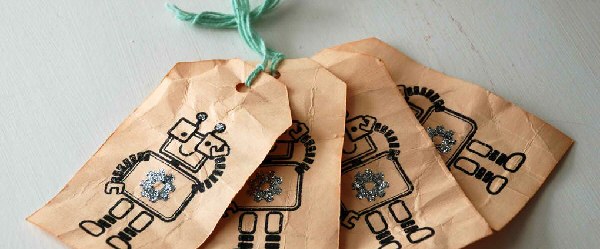
Facebook, Flickr, 500px and mobile sharing applications such as Instagram have replaced the hard copy photo album as the preferred method for letting others see pictures you have taken. Now photos are easy to take and easy to share. This easiness makes a number of legal questions potentially more relevant.
Embarrassing photos
Let’s be honest — every one of us has been in photos that we do not want others to see. It may be just bad lighting, an awkward angle, or something more sinister such as nudity or drug use, but having a photo like that made public would cause embarrassment or some other type of harm. Sometimes the law affords ways to get embarrassing photos taken down. To the same extent the law can help, the one posting the embarrassing photo puts himself at risk for legal liability.
Invasion of privacy. If someone takes a picture of another in a public place, or with a bunch of other people, the subject of the photo probably does not have a right of privacy in whatever he or she is doing in the photo. So the law will not be helpful in getting that content off the internet. But there are plenty of situations where the subject of a photo may have a privacy interest that the law will recognize.
- “Intrusion upon seclusion,” as its name suggests, is a legal claim that one can make when someone has intentionally intruded — physically or otherwise — upon their solitude or seclusion. Surreptitiously taken photos of a person in her own home, or in a place where she expected privacy (e.g., in a hotel room or dressing room) would likely give rise to an unlawful intrusion upon seclusion.
- “Publication of private facts” is another form of invasion of privacy. A person commits this kind of invasion of privacy by publishing private, non-newsworthy facts about another person in a way that would be offensive to a reasonable person. Posting photos of one’s ex-girlfriend engaged in group sex would be considered publication of private facts. Posting family pics of one’s nephew when he was a kid would not.
Photoshop jobs
Some people enjoy using Photoshop or a similar advanced photo editing application to paste the head of one person onto the body of another. (Reddit has an entire category devoted to Photoshop requests.) This can have drastic, negative consequences on the person who — through this editing — appears to be in the photo doing something he or she did not and would not do. This conduct might give rise to legal claims of infliction of emotional distress and defamation.
Infliction of emotional distress. We expect our fellow members of society to be somewhat thick-skinned, and courts generally do not allow lawsuits over hurt feelings. But when it’s really bad, the law may step in to help. One may recover for infliction of emotional distress (sometimes called “outrage”) against another person who acts intentionally, and in a way that is extreme and outrageous, to cause emotional distress that is severe. Some states require there to be some associated physical harm. A bride who sued her photographer over the emotional distress she suffered when the photographer posted pictures of her in her underwear lost her case because she alleged no fear that she was exposed to physical harm.
Defamation. A person can sue another for defamation over any “published” false statement that harms the person’s reputation. Some forms of defamation are particularly bad (they are called defamation per se), and are proven when, for example, someone falsely states that a person has committed a crime, has engaged in sexually immoral behavior, or has a loathsome disease. A realistic Photoshop job could effectively communicate a false statement about someone that is harmful to his or her reputation.
Copied photos
Since copying and reposting images is so easy, a lot of people do it. On social media platforms, users often do not mind if a friend copies the photos from last night’s dinner party and reuploads them to another account. In situations like these, it’s simply “no harm, no foul.” Technically there is copyright infringement going on, but what friend is going to file a lawsuit against another friend over this socially-acceptable use? The more nefarious situations illustrate how copyright can be used to control the display and distribution of photos.
In most instances, the person who takes a photo owns the copyright in that photo. A lot of people believe that if you appear in a photo, you own the copyright. That’s not true unless the photo is a self portrait (e.g., camera held at arm’s length and turned back toward the person, or shot into the mirror), or unless the person in the photo has otherwise gotten ownership of the copyright through a written assignment (a much rarer situation).
A person who finds that his or her copyrighted photos have been copied and reposted without permission has a number of options available. In the United States, a quick remedy is available under the notice and takedown provisions of the Digital Millennium Copyright Act. The copyright owner sends a notice to the platform hosting the photos and demands the photos be taken down. The platform has an incentive to comply with that demand, because if it does, it cannot be held responsible for the infringement. Usually a DMCA takedown notice is sufficient to solve the problem. But occasionally one must escalate the dispute into copyright infringement litigation.
Some other things to keep in mind
With the protections afforded by free speech and the difficulties involved in winning an invasion of privacy or infliction of emotional distress lawsuit, one can get away with quite a bit when using photos in social media. One court has even observed that you do not need a person’s permission before tagging him or her in a photo.
A person offended by the use of a photo by him or of him may have recourse even in those situations where it is not so egregious as to give him a right to sue. Social media platforms have terms of service that prohibit users from harassing others, imitating others, or otherwise engaging in harmful conduct. The site will likely remove content once it is made aware of it. (I have sent many requests to Facebook’s legal department requesting content to be removed — and it has been removed.) The norms of social media communities play an important role in governing how users treat one another, and that principle extends to the notions of civility as played out through the use of photos online.
Evan Brown is a Chicago technology and intellectual property attorney. He advises businesses and individuals in a wide range of situations, including social media best practices.
Photo credit: AForestFrolic

 Does an online service provider forfeit the safe harbor protections of the Digital Millennium Copyright Act if, when terminating the account of a repeat infringer, it does not delete all content the repeat infringer uploaded — infringing and noninfringing alike? A recent decision involving the antique internet technology Usenet sheds light on an answer.
Does an online service provider forfeit the safe harbor protections of the Digital Millennium Copyright Act if, when terminating the account of a repeat infringer, it does not delete all content the repeat infringer uploaded — infringing and noninfringing alike? A recent decision involving the antique internet technology Usenet sheds light on an answer. 


 CNET News is running a
CNET News is running a